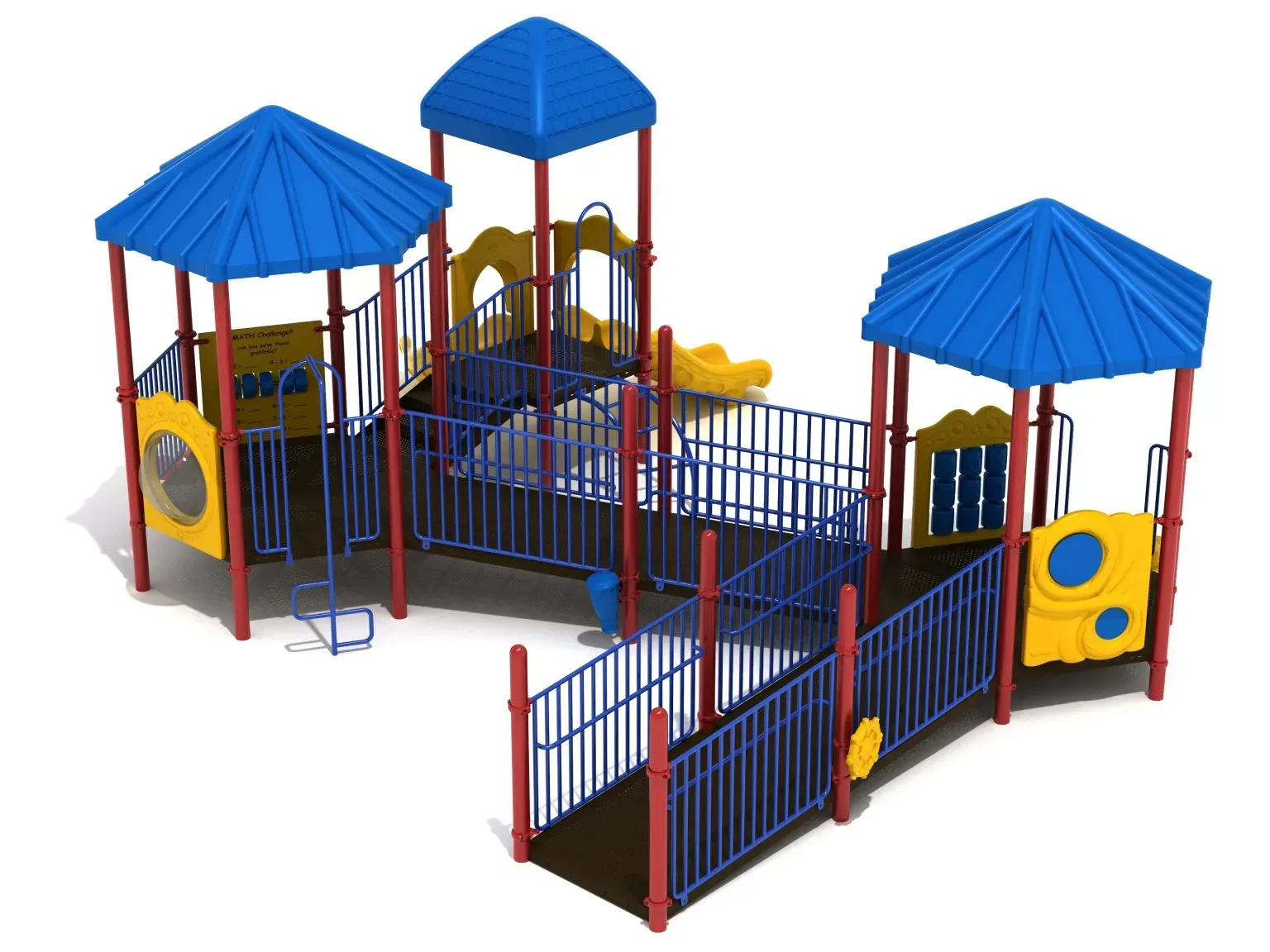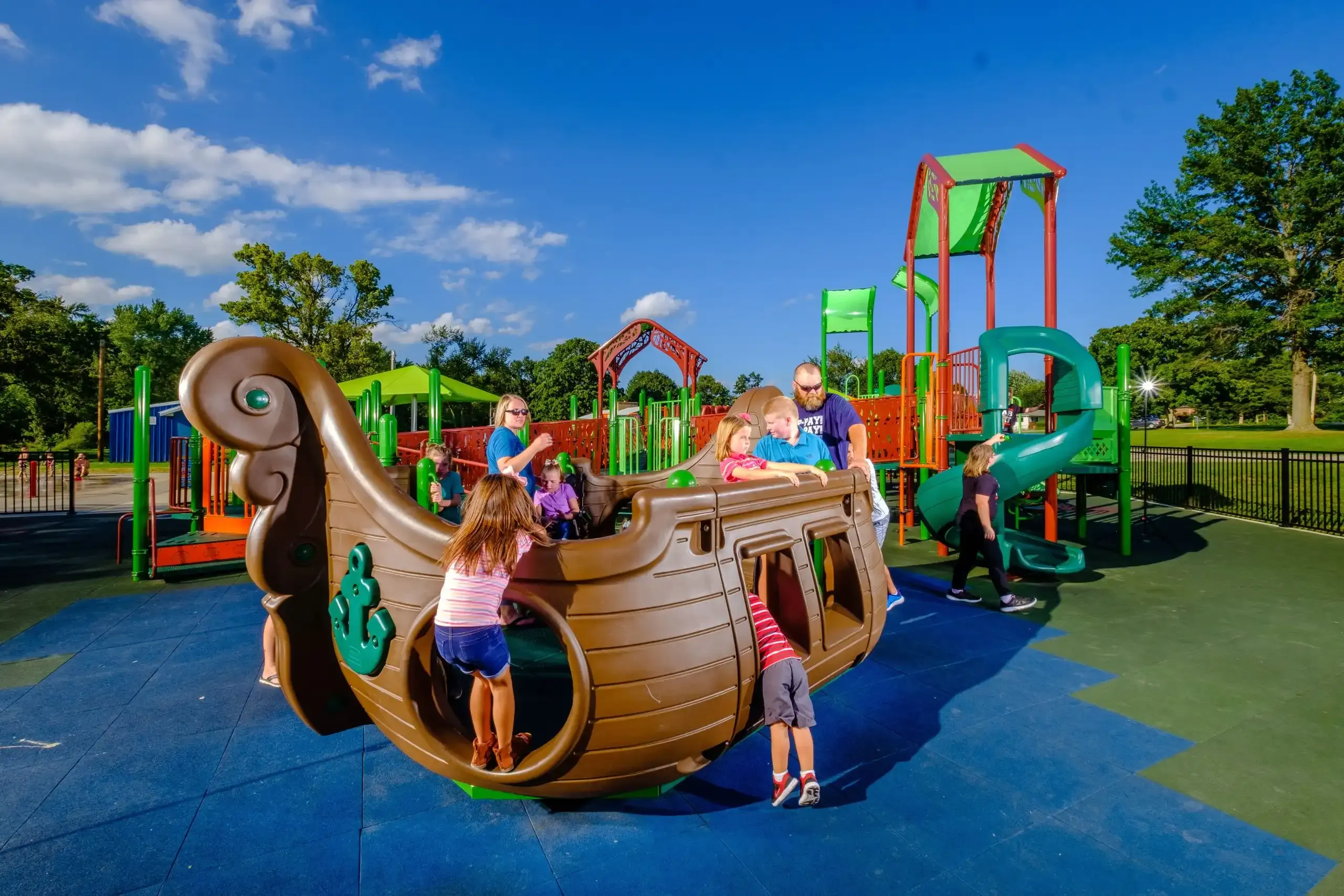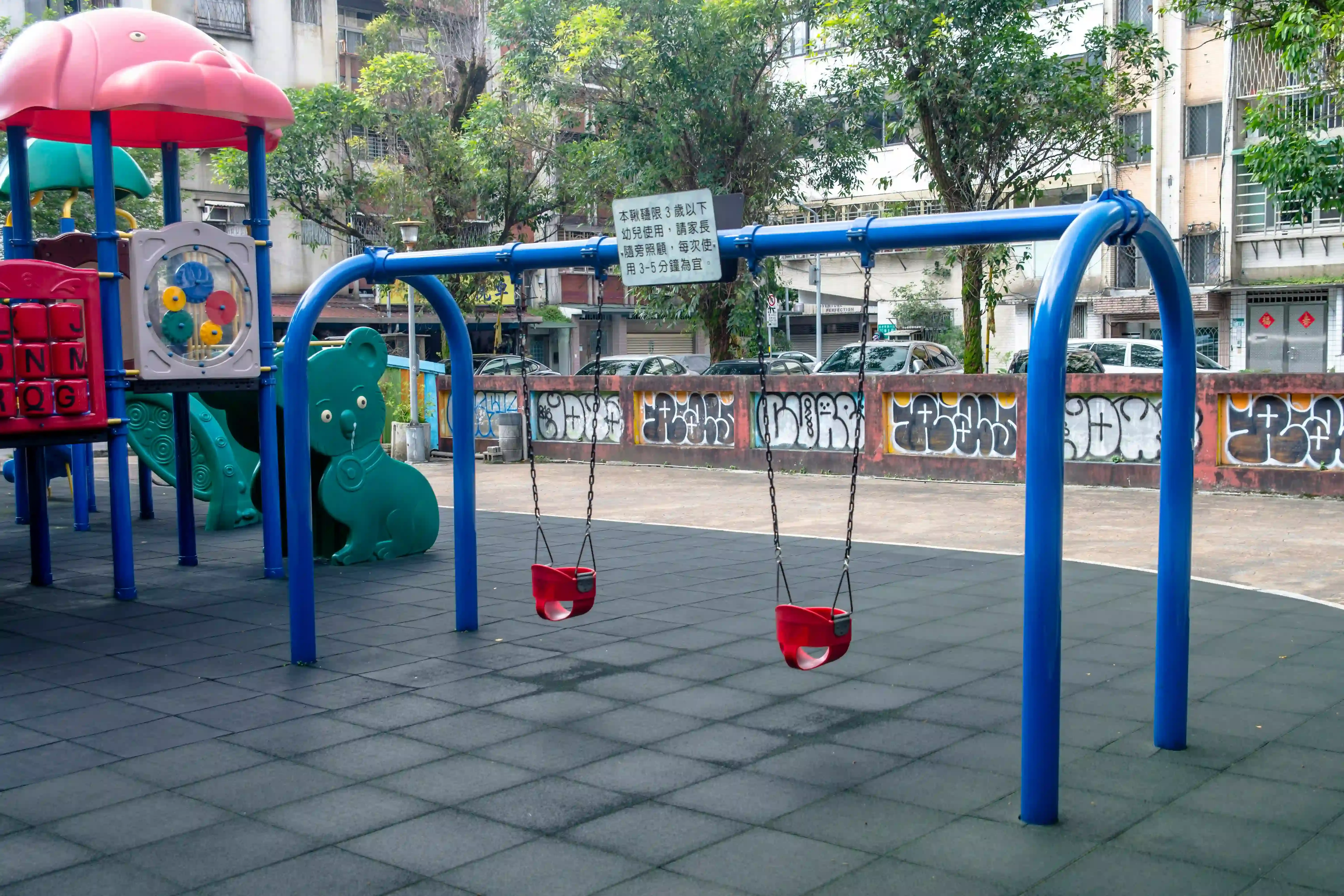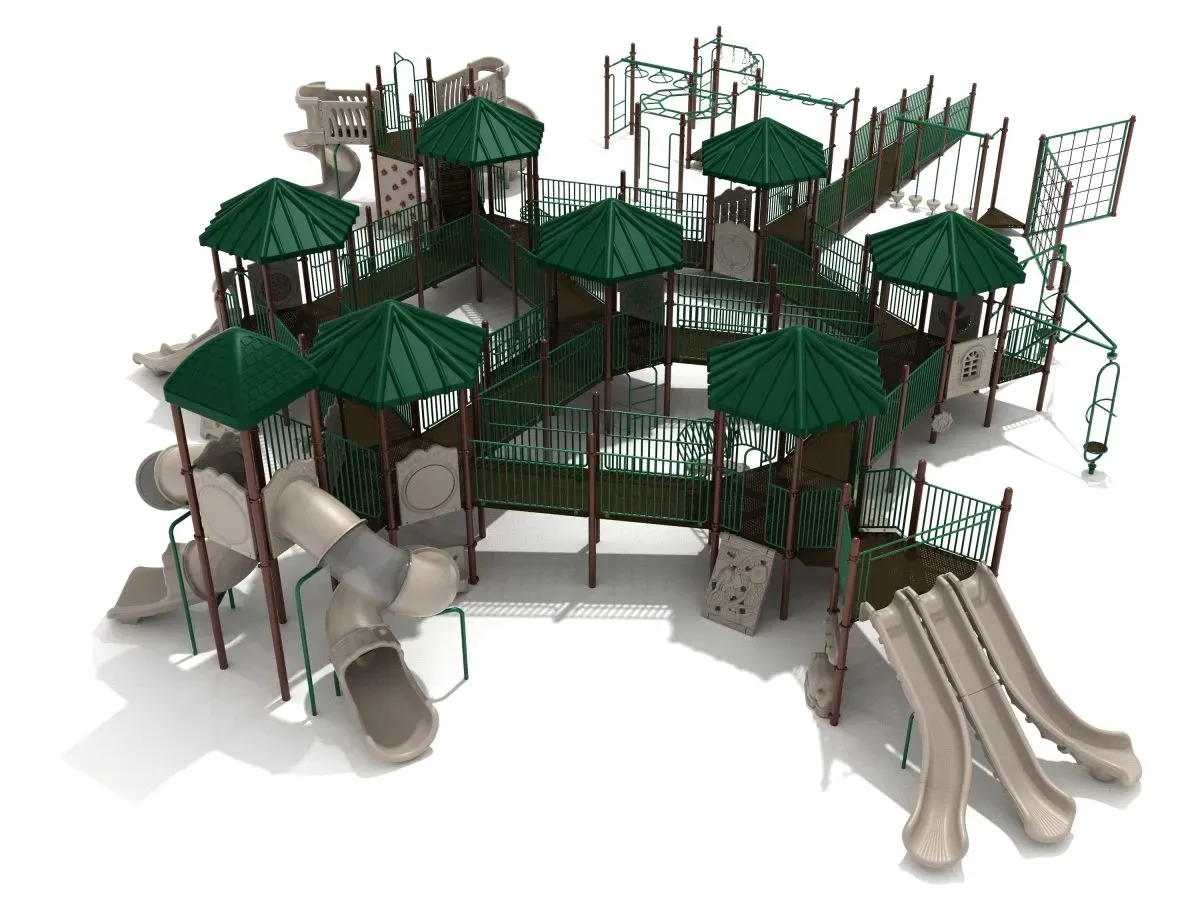Table of Contents
Ever rolled past a playground and seen kids watching from the sidelines, unable to join the fun? It happens more often than you'd think. Traditional play structures, while great for some, leave others out entirely. This isn't just a minor inconvenience; it's a fundamental barrier to development and social connection. That's where the conversation around commercial accessible playground equipment becomes critical.
Why Commercial Accessible Playground Equipment Matters for Inclusive Communities

Why Commercial Accessible Playground Equipment Matters for Inclusive Communities
Look, building playgrounds isn't just about throwing up some metal and plastic. It's about building community. And if that community leaves out kids because they use a wheelchair, have sensory processing differences, or need a different kind of challenge, then you haven't really built a community space at all. That's precisely why focusing on Why Commercial Accessible Playground Equipment Matters for Inclusive Communities is non-negotiable. It's the difference between a space that serves *some* kids and a space that genuinely welcomes *all* kids, allowing them to develop crucial social skills, build confidence, and just experience the simple, unadulterated joy of play together. When you see kids of different abilities navigating the same structure, helping each other, or just sharing a laugh on a tandem swing, you see a microcosm of the kind of inclusive community we should all be aiming for.
Decoding Commercial Accessible Playground Equipment: Features That Make a Difference

Decoding Commercial Accessible Playground Equipment: Features That Make a Difference
More Than Just a Ramp: Key Design Elements
so you've decided to build an accessible playground. Great. But what does "accessible" actually mean when you're looking at commercial accessible playground equipment? It's way more than just slapping a ramp onto a tower and calling it a day. A truly accessible design considers the entire play experience. We're talking about things like wide pathways that accommodate wheelchairs and other mobility devices, ensuring they can easily navigate the space. Think about transfer stations – specific points on a structure where someone can move from their mobility aid onto the equipment itself. These aren't just add-ons; they are fundamental parts of the design that allow access to elevated play events. Without them, that ramp is just a nice slope leading to a dead end for many kids.
Sensory Experiences and Ground-Level Play
Accessibility isn't only about getting *onto* a structure. It's also about what happens at ground level and engaging different senses. Good commercial accessible playground equipment includes features that kids can interact with without needing to climb or transfer. Musical panels, tactile surfaces, spinning elements that don't require standing – these are crucial for kids with mobility challenges or sensory processing sensitivities. And let's not forget surfacing. That loose-fill wood chip stuff? Forget about it for wheelchairs. You need poured-in-place rubber or engineered wood fiber that meets accessibility standards. It might cost more upfront, but it's the literal foundation for inclusive play. Anyone who tells you otherwise hasn't spent five minutes trying to push a stroller, let alone a wheelchair, through two inches of mulch.
Key Features of Accessible Playground Equipment
- Wide, non-slip ramps and pathways
- Transfer stations for moving onto structures
- Ground-level play panels (sensory, interactive)
- Accessible swings (full bucket seats, harness options)
- Spinners and motion activities usable from a seated position
- Accessible surfacing (poured-in-place rubber, engineered wood fiber)
- Areas for quiet play or sensory retreat
Planning Your Accessible Play Space: Essential Considerations for Commercial Accessible Playground Equipment

Planning Your Accessible Play Space: Essential Considerations for Commercial Accessible Playground Equipment
Starting with the Community: Who Are You Building For?
Alright, you're sold on the idea of inclusive play. Fantastic. Now comes the nitty-gritty: planning. Before you even glance at catalogues filled with shiny commercial accessible playground equipment, you need to talk to people. Seriously. Go talk to parents of kids with disabilities, disability advocates, therapists, educators, and most importantly, kids themselves. Find out what barriers they've faced at other playgrounds and what kind of play experiences they crave but can't currently access. This isn't just a nice gesture; it's critical for designing a space that actually meets needs, not just minimum legal requirements. A ramp might be code-compliant, but if it leads to equipment no one wants to use, you've wasted time and money. Real-world input beats a checklist every time.
Budgeting Realistically: Costs and Funding Streams
Let's talk money. Building an accessible playground, especially one using high-quality commercial accessible playground equipment, often costs more upfront than a standard playground. Accessible surfacing, specialized swings, and complex ramp systems aren't cheap. Get a realistic grasp of the costs early on, including installation and long-term maintenance. Don't underestimate the latter; accessible surfaces need upkeep. Look beyond your standard municipal or school budget. Explore grants specifically for accessibility projects, community fundraising initiatives, and partnerships with local businesses or non-profits. Getting creative with funding can make a seemingly impossible project achievable. Ignoring the budget until you're deep into design is a surefire way to end up with a compromised, less-than-accessible space.
Here are some common funding sources to explore:
- Federal and State Grants for Accessibility
- Local Community Development Block Grants (CDBG)
- Private Foundation Grants focused on Children or Disability
- Corporate Sponsorships
- Community Fundraising Campaigns
- Dedicated Capital Improvement Budgets
Site Selection and Working with Suppliers
Where you put this playground matters. Consider site accessibility from parking areas and public transport. Ensure the site is relatively flat or can be graded easily, as excessive slopes make navigation difficult even with accessible equipment. Check local building codes and accessibility standards – ADA (Americans with Disabilities Act) is the baseline in the US, but some states or municipalities have stricter requirements. When you engage with suppliers of commercial accessible playground equipment, be specific about your accessibility goals, informed by your community input. Don't just ask for "accessible stuff"; ask for examples of their truly inclusive projects, ask about transfer heights, clear ground space requirements, and sensory features. A good supplier will be a partner in the process, not just an order taker.
Beyond Swings and Slides: The Real Impact of Accessible Play

Beyond Swings and Slides: The Real Impact of Accessible Play
More Than Just Fun: Developmental Wins
so we've covered the nuts and bolts of getting kids onto the playground with proper commercial accessible playground equipment. But let's talk about the *why*, the stuff that really matters. Accessible play isn't just about giving a child something to do for an hour. It's a powerhouse for development. Think about the physical benefits: improved gross motor skills, balance, coordination, even just building strength by navigating ramps or using adaptive swings. It's critical physical therapy disguised as fun. Then there's the cognitive side: problem-solving as they figure out how to use different equipment, spatial awareness, and understanding cause and effect. When you design a space that thoughtfully includes sensory play elements and varied challenges, you're building brains as much as you're building muscles. Anyone who dismisses play as trivial fundamentally misunderstands childhood development.
It's not just about individual growth either. Accessible playgrounds are social melting pots. Kids of all abilities learn to interact, communicate, and cooperate. They learn empathy not by being told to be nice, but by naturally engaging with peers who might move or communicate differently. These interactions break down barriers and normalize differences in a way that structured lessons rarely can. Watching a group of kids invent a game that includes everyone, regardless of how they move, is proof that these spaces cultivate genuine inclusion organically.
Building Community and Breaking Down Barriers
The ripple effect of accessible play extends far beyond the kids themselves. Parents and caregivers of children with disabilities often face isolation. Finding safe, engaging spaces where their child is genuinely included, not just tolerated, is huge. These playgrounds become community hubs for adults too, offering opportunities to connect, share experiences, and build support networks. They challenge public perceptions, too. When a community invests in truly accessible commercial accessible playground equipment, it sends a clear message: everyone belongs here. It moves the needle from viewing accessibility as a compliance issue to seeing it as a fundamental aspect of community building and social justice.
Let's be blunt: a standard playground with a single, lonely ramp up to nowhere isn't a statement of inclusion; it's often an afterthought. But a well-designed accessible play space, one that considered diverse needs from the ground up, is a powerful statement about the value placed on every member of the community. It's an investment in social capital, fostering understanding and acceptance one slide, one swing, one shared laugh at a time.
Here are some key impacts of accessible playgrounds:
- Enhanced physical development for children with diverse needs.
- Improved cognitive skills and problem-solving abilities.
- Increased social interaction and peer relationships among children of all abilities.
- Reduced isolation for parents and caregivers of children with disabilities.
- Greater community cohesion and understanding of disability.
- Positive shift in societal attitudes towards inclusion.
- Provides equitable access to the fundamental right of play.
Choosing the Right Partner for Your Commercial Accessible Playground Equipment Project

Choosing the Right Partner for Your Commercial Accessible Playground Equipment Project
Experience Matters: Look Beyond the Brochure
Alright, you've done the legwork: talked to the community, wrestled with the budget, and scoped out a site. Now comes a big one: picking the company that’s actually going to provide the commercial accessible playground equipment. This isn't like ordering office supplies. You need a partner who gets it. Anyone can sell you swings and slides, but you need someone with a proven track record in accessibility. Ask them about their past accessible projects. Have they designed for different age ranges? Different disability types? A company that just added a ramp because the code said so is very different from one that built an entire sensory garden or installed adaptive swings from the ground up. Their portfolio should show thoughtful design, not just compliance checkboxes. Don't be shy; ask for references from clients who built *accessible* spaces, not just standard ones. A glossy brochure means nothing if they can't back it up with real-world examples of inclusive success.
Check the Proof: References and Site Visits
Once you've got a few potential partners for your commercial accessible playground equipment project, it's time for due diligence. Call those references. Ask them about the process, the installation, and most importantly, the *usability* of the final playground for kids with diverse needs. Did the company listen to their specific requirements? Were there hidden costs? Did the equipment hold up? If possible, visit a completed accessible playground they supplied. See for yourself how kids are interacting with the equipment. Talk to parents or site managers there. A company can talk a good game, but seeing their work in action, and hearing from people who use it daily, provides the clearest picture of their capabilities and commitment to genuine accessibility.
Here are some pointed questions to ask potential suppliers:
- Can you provide references for at least three completed accessible playground projects?
- What specific experience do you have designing for children with sensory processing needs?
- How do you ensure your equipment meets or exceeds ADA standards and any relevant local codes?
- Describe your process for incorporating community feedback into the design phase.
- What is your warranty policy for accessible components and surfacing?
- Can you provide a detailed breakdown of installation costs, including site preparation?
- How do you handle maintenance recommendations and replacement parts for accessible equipment?
Beyond the Sale: Installation and Support
The relationship with your supplier of commercial accessible playground equipment doesn't end when the check clears. The installation process itself is critical. Do they use certified installers experienced with accessible equipment and surfacing? Proper installation is key to safety and long-term durability. Also, consider their post-sale support. What kind of warranty do they offer on accessible components, which might experience different wear and tear? What about maintenance guides or access to replacement parts down the line? A reliable partner will provide ongoing support, ensuring your accessible playground remains safe and functional for years to come. Cutting corners here to save a buck upfront can lead to headaches, safety hazards, and a playground that quickly becomes less accessible over time. Choose someone who sees this as a long-term investment in the community, just like you do.
Making Playgrounds Actually Playgrounds for All
So, we've talked about what commercial accessible playground equipment is and why it's not just a nice-to-have, but essential. It’s more than just adding a ramp to a tower; it's about designing spaces from the ground up so every kid gets a shot at the swings, the slides, the spinning things that make you dizzy in the best way. Ignoring accessibility means building barriers, plain and simple. The goal isn't just compliance with some rulebook; it's about building stronger communities where no kid is left watching from the fence line. It takes thought, planning, and sometimes pushing back against the 'easier' way. But seeing a playground truly buzzing with kids of all abilities? That’s the point.